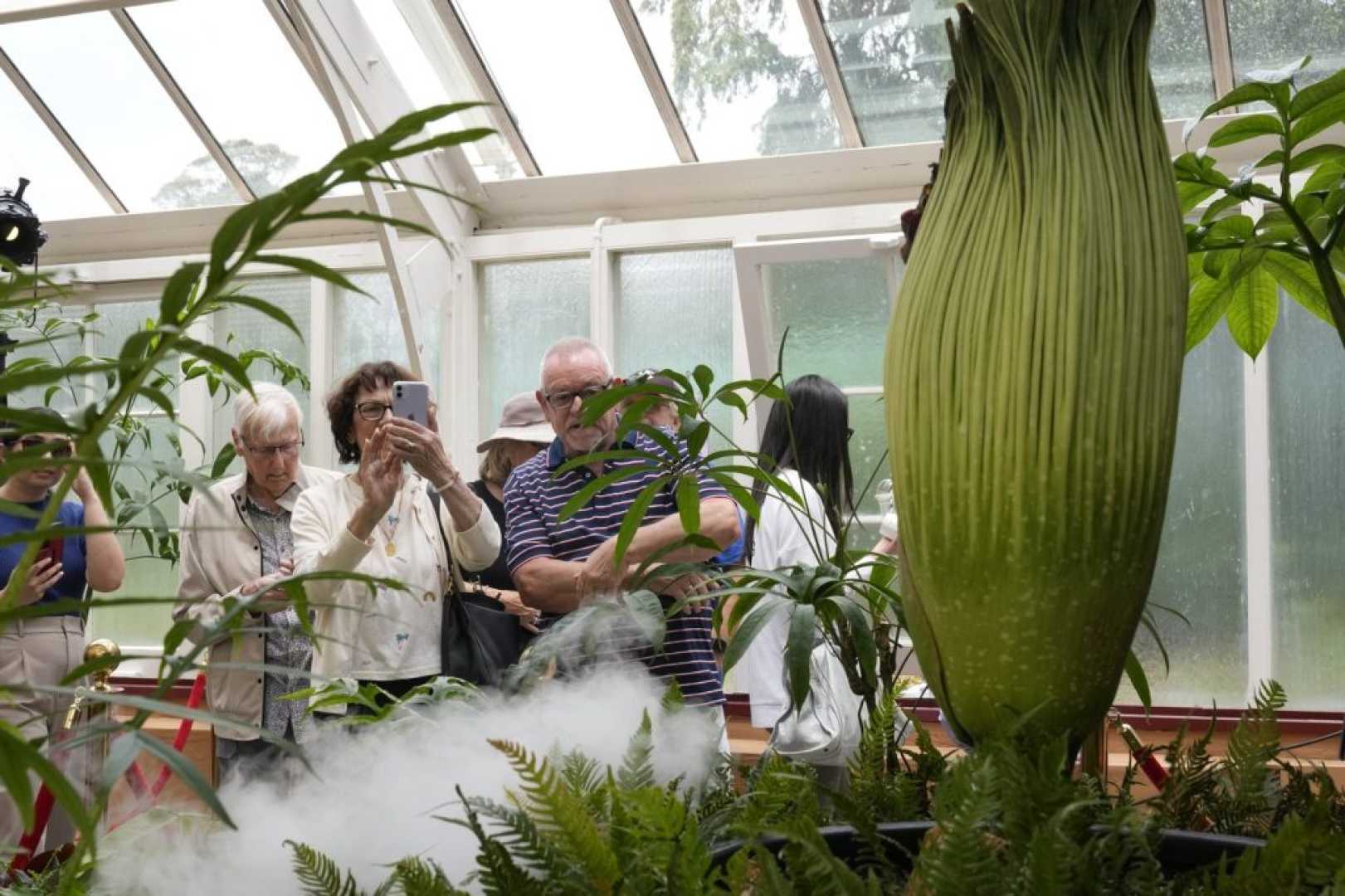News
Sydney’s ‘Corpse Flower’ Nears Bloom, Drawing Thousands to Livestream

SYDNEY, Australia — A rare and pungent event is captivating Sydney as the Royal Botanic Garden prepares for the blooming of its amorphophallus titanum, commonly known as the “corpse flower.” Nicknamed “Putricia,” the plant is expected to release its infamous rotting flesh-like odor any day now, drawing thousands of online viewers to a livestream set up by the garden.
The corpse flower, native to the rainforests of Sumatra, Indonesia, is renowned for its massive size and foul smell. Sydney’s specimen, standing at 5 feet tall, is set to bloom for the first time in 15 years at the garden. The bloom, however, will last only about 24 hours, making it a fleeting spectacle.
“People have become quite obsessed with her,” said Daniella Pasqualini, the garden’s horticultural development supervisor. “She’s taken on a life of her own.” The anticipation has sparked a unique online community, with viewers coining phrases like “WWTF” (We Watch the Flower) and “WDNRP” (We Do Not Rush Putricia) in the livestream’s chat.
Emily Colletti, who tends to the garden’s collection of amorphophallus titanum, described the flower’s odor as “like rotting garbage or dead mice.” The plant’s scientific name, derived from Ancient Greek, translates to “giant, misshapen penis,” but its striking appearance and rarity have made it a star attraction.
The corpse flower is endangered in the wild due to deforestation and land degradation. While fewer than a thousand remain in their natural habitat, many are cultivated in botanical gardens worldwide. Sydney’s Putricia is one of several titan arums in the Royal Botanic Gardens, with the last bloom occurring 15 years ago.
Despite the excitement, predicting the exact moment of the bloom remains a challenge. “I’ve actually looked at one … 20 minutes before it started to open and you had no idea it was going to open 20 minutes later,” Colletti said. The garden has set up a livestream to ensure no one misses the event, with thousands already tuning in daily.
Once it blooms, Putricia will unveil a vibrant maroon or crimson skirt-like structure called a spathe, surrounding its central spadix. The plant’s brief flowering period and unique characteristics have made it a global fascination, with similar blooms in San Francisco, San Diego, and London drawing large crowds in recent years.












